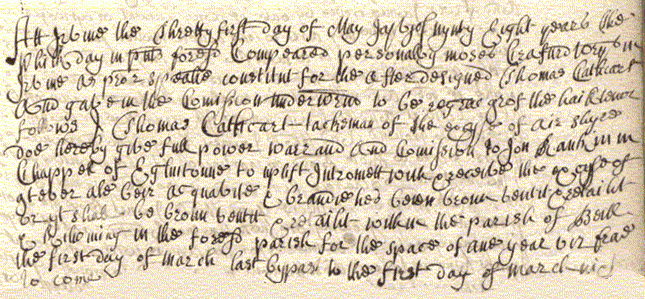Poser 356 - Deed from Bailliary Court of Cunninghame, 1698
This poser is the first part of a deed recorded in 1698 in the register of deeds from the bailliary court of Cunninghame (National Records of Scotland, RH11/19/8, page 83).

At first glance the hand might look quite modern and whole words (like day in line one and power in line 6) are immediately recognisable. However, once you begin to read the deed in detail, problems abound.
There is an issue with bleed-through from the page overleaf, which is compounded by the clerk having delayed replenishing his pen with ink slightly too long with occasional words and phrases. The last three words in this extract (nixt to come) is the worst example. This is a fairly common phrase in Scottish legal documents, so if you know many of the standard phrases in Scots Law for this period, you have a head start in reading these.
Abbreviations, particularly for common Scots legal terminology, are another factor but the clerk has been reasonably consistent in denoting these with heavy pen strokes above the words concerned. There is a jaj date in line 1 but we've already given you the year.
Double letters (especially the double-t and double-l) are occasionally hard to make out and the h, especially in the th-ligature is not written very clearly. Three separate forms of the letter s are used.
Questions: Who was Thomas Cathcart and what had he commissioned John Rankin to do?
Help
For help with reading the poser, use our coaching manual.The following areas may be of particular assistance.
Scots words
Ligatured letters
Double-letters
Jaj dates
Abbreviations
Letter s
